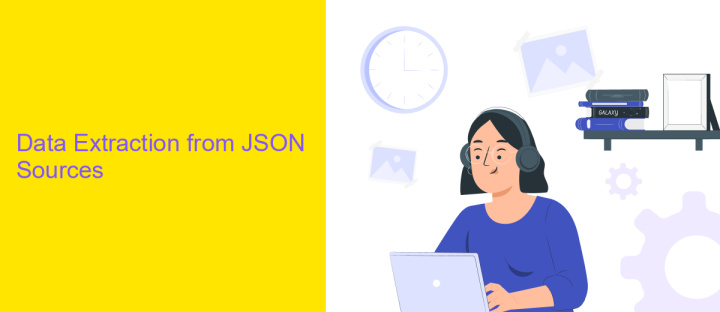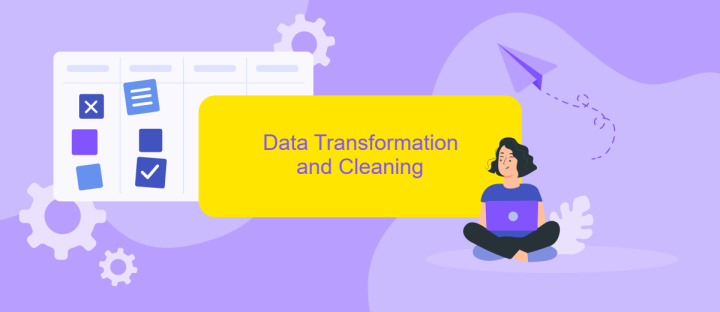ETL JSON Data
Extract, Transform, Load (ETL) processes are essential for managing data in modern applications, particularly when dealing with JSON data. JSON, or JavaScript Object Notation, is a lightweight data-interchange format that's easy for humans to read and write, and easy for machines to parse and generate. This article explores the intricacies of ETL processes tailored specifically for handling JSON data efficiently.
ETL JSON Data Process Overview
ETL (Extract, Transform, Load) process for JSON data involves three primary stages: extracting the JSON data from various sources, transforming it into a suitable format, and loading it into a target database or data warehouse. This process ensures that data is clean, standardized, and ready for analysis.
- Extract: Retrieve JSON data from APIs, files, or databases.
- Transform: Cleanse and normalize the data, ensuring consistency.
- Load: Insert the transformed data into the target storage system.
Tools like ApiX-Drive can simplify the integration and automation of the ETL process. ApiX-Drive allows seamless connection to various data sources, automating the extraction and transformation stages. By using such services, businesses can efficiently handle complex data workflows, ensuring data accuracy and saving valuable time.
Data Extraction from JSON Sources

Data extraction from JSON sources involves retrieving and parsing JSON data from various endpoints, such as APIs, databases, or flat files. JSON, or JavaScript Object Notation, is a lightweight data-interchange format that is easy for humans to read and write and for machines to parse and generate. Extracting data from JSON sources requires understanding the structure of the JSON data and using appropriate tools or libraries to parse and manipulate the data. Common programming languages like Python, JavaScript, and Java offer built-in libraries to handle JSON data efficiently.
For seamless integration and automation of data extraction processes, services like ApiX-Drive can be highly beneficial. ApiX-Drive allows users to set up integrations without coding, making it easier to connect various data sources and automate the data extraction process. By leveraging such services, businesses can save time and reduce the complexity involved in manual data handling, ensuring that data is consistently and accurately extracted from JSON sources and integrated into their workflows.
Data Transformation and Cleaning

Data transformation and cleaning are crucial steps in the ETL process to ensure the quality and usability of data. This involves converting raw JSON data into a structured format that aligns with the target data schema, and removing any inconsistencies or errors that may exist.
- Parsing JSON: Extract the data fields from the JSON objects and map them to the corresponding columns in the target database.
- Data Type Conversion: Ensure that all data types match the requirements of the destination system, converting strings to dates, integers, etc.
- Handling Missing Values: Identify and manage any missing or null values, either by filling them with default values or by excluding incomplete records.
- Data Deduplication: Detect and remove duplicate records to maintain data integrity.
- Validation and Standardization: Apply rules and formats to standardize data entries, such as ensuring consistent date formats and correcting typos.
Using tools like ApiX-Drive can simplify the transformation and cleaning process by automating data integration and ensuring seamless data flow between systems. This service allows for easy configuration of data pipelines, reducing the manual effort required and minimizing the risk of errors.
Data Loading into Destination Systems

Once the data has been extracted and transformed, the final step is to load it into the destination systems. This process involves transferring the cleaned and structured data to a database, data warehouse, or any other storage system where it can be accessed for analysis and reporting.
Loading data efficiently requires careful planning to ensure data integrity and minimize downtime. It is crucial to choose the right loading strategy based on the volume of data and the specific requirements of the destination system.
- Batch Loading: Suitable for large volumes of data that can be processed in chunks.
- Real-Time Loading: Ideal for scenarios requiring immediate data availability.
- Incremental Loading: Updates only the changed data, reducing load times.
For seamless integration and automation of the data loading process, tools like ApiX-Drive can be utilized. ApiX-Drive simplifies the setup of data pipelines, ensuring that data flows smoothly from source to destination without manual intervention, thus enhancing efficiency and reliability.
- Automate the work of an online store or landing
- Empower through integration
- Don't spend money on programmers and integrators
- Save time by automating routine tasks
ETL Performance Optimization
Optimizing ETL performance is crucial for handling large JSON datasets efficiently. One key strategy is to parallelize data processing tasks, distributing the workload across multiple processors or nodes to reduce execution time. Additionally, ensure that your ETL tool supports incremental data loading to minimize the amount of data processed in each run, which significantly boosts performance. Efficient indexing and partitioning of JSON data can also enhance query performance and reduce read times.
Another effective approach is to utilize specialized ETL services like ApiX-Drive, which offers seamless integration and automation capabilities. ApiX-Drive allows you to connect various data sources and destinations effortlessly, streamlining the ETL process. By leveraging its built-in optimization features, such as automated scheduling and error handling, you can further enhance the efficiency and reliability of your ETL workflows. Regularly monitoring and fine-tuning your ETL processes ensures sustained optimal performance and scalability.
FAQ
What is ETL and how does it apply to JSON data?
How can I extract JSON data from an API?
What are common tools or libraries used for transforming JSON data?
How can I automate the ETL process for JSON data?
What are the challenges of working with JSON data in ETL processes?
Apix-Drive is a universal tool that will quickly streamline any workflow, freeing you from routine and possible financial losses. Try ApiX-Drive in action and see how useful it is for you personally. In the meantime, when you are setting up connections between systems, think about where you are investing your free time, because now you will have much more of it.


